I'm not going to lie, we had very high hopes when it came to travelling Patagonia and longed for endless mouthwatering meals, wild nature camping spots and welcoming people, and while that was true for Argentina, the same couldn't be said for Chile.
Chile, to us, felt very overrated, and while this might just be our experience, this is what added to our impression of the country. Yes, don't get me wrong, the scenery is incredible in Chile, but paying high prices for crappy food (think hot dogs, burgers and basic toast bread) becomes frustrating and takes away from the entire experience.
So, without much hesitation, we saw what we wanted to see in Chile and decided to spend more of our time in Argentina, where we felt instantly welcome (even with our terrible Spanish skills), mingled with locals over a traditional asado and enjoyed the lower prices which the Blue Dollar allowed.
This blog post is dedicated to Argentina and the experience we had there, in the hopes of inspiring others to travel there to take advantage of its incredible features.
Side note: We are not trying to downplay Chile and all that it offers, but to us, Argentina was a pleasant surprise and offered us an incredible experience in terms of hospitality, cultural traditions, food and scenery.
Chile, to us, felt very overrated, and while this might just be our experience, this is what added to our impression of the country. Yes, don't get me wrong, the scenery is incredible in Chile, but paying high prices for crappy food (think hot dogs, burgers and basic toast bread) becomes frustrating and takes away from the entire experience.
So, without much hesitation, we saw what we wanted to see in Chile and decided to spend more of our time in Argentina, where we felt instantly welcome (even with our terrible Spanish skills), mingled with locals over a traditional asado and enjoyed the lower prices which the Blue Dollar allowed.
This blog post is dedicated to Argentina and the experience we had there, in the hopes of inspiring others to travel there to take advantage of its incredible features.
Side note: We are not trying to downplay Chile and all that it offers, but to us, Argentina was a pleasant surprise and offered us an incredible experience in terms of hospitality, cultural traditions, food and scenery.
So, Why Argentina?
Okay so, as soon as we set foot (or wheels in our case) across the border into Argentina, we instantly felt relaxed and welcomed and could take advantage of delicious food at great prices. We crossed the border multiple times, since it is necessary when travelling Patagonia, so we experienced this feeling time and time again and this made us want to explore even more.
Oh, and then there is the incredible camping culture, which, if you asked me before this trip, I knew nothing about – but ill get to that later. In addition, Argentina had an abundance of great-priced hotels, air bnbs, restaurants, cafes and attractions compared to its neighbour, who we felt was a 'wannabe USA' (which is fine, but it wasn't what we were looking for).
In Chile, it felt as though the culture was lacking, and even the locals told us that the food they used to eat there is now being exported, and they are being left with the worst, in comparison to Argentina, which sells their best steaks at the lowest prices locally. Locals told us that there were now huge fines for fishing and the fish was now being sent abroad instead of being consumed locally, and according to them, Chile had changed for the worst.
Okay, so let me break this down into categories so you can see why we LOVED Argentina so much and would recommend it in a heartbeat.
Oh, and then there is the incredible camping culture, which, if you asked me before this trip, I knew nothing about – but ill get to that later. In addition, Argentina had an abundance of great-priced hotels, air bnbs, restaurants, cafes and attractions compared to its neighbour, who we felt was a 'wannabe USA' (which is fine, but it wasn't what we were looking for).
In Chile, it felt as though the culture was lacking, and even the locals told us that the food they used to eat there is now being exported, and they are being left with the worst, in comparison to Argentina, which sells their best steaks at the lowest prices locally. Locals told us that there were now huge fines for fishing and the fish was now being sent abroad instead of being consumed locally, and according to them, Chile had changed for the worst.
Okay, so let me break this down into categories so you can see why we LOVED Argentina so much and would recommend it in a heartbeat.
The Blue Dollar
We were a little confused about the Blue Dollar, having heard it from fellow travellers in our hostel in Chile, but here is a little overview. The blue dollar refers to the informal exchange rate, where the U.S. dollar can be exchanged for a higher value than the official exchange rate.
By exchanging currency on the blue market, travellers can stretch their budgets and enjoy more value for their money, which is precisely what we did. Furthermore, using the many Western Union branches, we got a better rate (almost double the official rate), which made everything half-price for us and very affordable.
Don't get me wrong, in some parts of Argentina accessing a Western Union or even a standard ATM for that matter was a pain, so this needs to be planned properly unless you have the patience of a saint and don't mind having no money for a few days.
By exchanging currency on the blue market, travellers can stretch their budgets and enjoy more value for their money, which is precisely what we did. Furthermore, using the many Western Union branches, we got a better rate (almost double the official rate), which made everything half-price for us and very affordable.
Don't get me wrong, in some parts of Argentina accessing a Western Union or even a standard ATM for that matter was a pain, so this needs to be planned properly unless you have the patience of a saint and don't mind having no money for a few days.
Argentina's Camping Culture
Argentina's camping culture is deeply ingrained in the country's character, offering outdoor enthusiasts a chance to embrace nature's wonders at no cost or very little money. With its diverse landscapes, from the majestic Andes Mountains to the stunning Patagonian wilderness, Argentina provides countless opportunities for camping adventures.
We loved that you can pitch your tent near picturesque lakes, hike scenic trails, or immerse yourself in the awe-inspiring glaciers of the southern region and it was completely normal. Camping in Argentina allows you to connect with the country's breathtaking natural beauty and experience the tranquillity and freedom of the great outdoors.
We saw many people with rental campervans, European campervans, off-road vehicles, bike packers and motorcyclists with tents and hikers all gathering at the various campsites. The best thing was that many of the towns around Argentina had municipal campsites, which were as little as $1 to stay at, including electricity, showers, toilets, lots of space, picnic tables and BBQ facilities.
We couldn't believe it. The camping culture in Argentina made it easy for us to travel around by motorbike and pitch our tent almost anywhere for free or without spending a lot, and we LOVED this aspect.
We loved that you can pitch your tent near picturesque lakes, hike scenic trails, or immerse yourself in the awe-inspiring glaciers of the southern region and it was completely normal. Camping in Argentina allows you to connect with the country's breathtaking natural beauty and experience the tranquillity and freedom of the great outdoors.
We saw many people with rental campervans, European campervans, off-road vehicles, bike packers and motorcyclists with tents and hikers all gathering at the various campsites. The best thing was that many of the towns around Argentina had municipal campsites, which were as little as $1 to stay at, including electricity, showers, toilets, lots of space, picnic tables and BBQ facilities.
We couldn't believe it. The camping culture in Argentina made it easy for us to travel around by motorbike and pitch our tent almost anywhere for free or without spending a lot, and we LOVED this aspect.
Food in Argentina
Argentinian cuisine is renowned for its mouthwatering flavours and diverse influences, which is what we love about it. At the heart of the culinary scene is the beloved asado, a traditional barbecue feast that showcases the country's passion for grilled meats (and boy, are they passionate).
Succulent cuts of beef, chorizo sausages, and tender lamb are skillfully prepared over an open flame, creating a delectable smoky aroma and incredible taste. Pair these savoury delights with a glass of Malbec wine, Argentina's signature red wine, which we enjoyed trying in Mendoza, for a truly authentic dining experience.
Beyond asado, explore other culinary gems like empanadas (stuffed pastries), provoleta (grilled provolone cheese), and dulce de leche (caramel spread) that will tantalize your taste buds. As well as having a variety of incredible food on offer, the fact that it was affordable just blew our minds, so it was often that we cooked local steaks at campsites, made use of hostel kitchens, or even went out to steak restaurants to take advantage of this fantastic feature.
While we indulged in plenty of steaks and empanadas, we mistakenly ordered 30 empanadas the day of our long bus trip from Buenos Aires to Asuncion and this has put us off for a while - not because they were horrible but because we were pigs! We will enjoy them again some time soon (in moderation).
The social aspect of asado was apparent, when we asked a fellow camping couple if we could grill our steak on their fire, to which they agreed and we joined them for the evening with a bottle of wine. We sat around the fire sharing stories in broken Spanish and English but enjoyed a shared love for the outdoors, Mate and the local food.
There were many occasions when we would enjoy incredible meals in restaurants at incredibly low prices compared to Europe and we couldn't help but pinch ourselves that we were actually eating the best steak in the world paired with the best wine in the world, it was a dream! Food lovers will be impressed by Argentina, and now that the Blue Dollar allows travellers to get more bang for their buck, there is no better time to visit Argentina for a fantastic culinary experience.
Succulent cuts of beef, chorizo sausages, and tender lamb are skillfully prepared over an open flame, creating a delectable smoky aroma and incredible taste. Pair these savoury delights with a glass of Malbec wine, Argentina's signature red wine, which we enjoyed trying in Mendoza, for a truly authentic dining experience.
Beyond asado, explore other culinary gems like empanadas (stuffed pastries), provoleta (grilled provolone cheese), and dulce de leche (caramel spread) that will tantalize your taste buds. As well as having a variety of incredible food on offer, the fact that it was affordable just blew our minds, so it was often that we cooked local steaks at campsites, made use of hostel kitchens, or even went out to steak restaurants to take advantage of this fantastic feature.
While we indulged in plenty of steaks and empanadas, we mistakenly ordered 30 empanadas the day of our long bus trip from Buenos Aires to Asuncion and this has put us off for a while - not because they were horrible but because we were pigs! We will enjoy them again some time soon (in moderation).
The social aspect of asado was apparent, when we asked a fellow camping couple if we could grill our steak on their fire, to which they agreed and we joined them for the evening with a bottle of wine. We sat around the fire sharing stories in broken Spanish and English but enjoyed a shared love for the outdoors, Mate and the local food.
There were many occasions when we would enjoy incredible meals in restaurants at incredibly low prices compared to Europe and we couldn't help but pinch ourselves that we were actually eating the best steak in the world paired with the best wine in the world, it was a dream! Food lovers will be impressed by Argentina, and now that the Blue Dollar allows travellers to get more bang for their buck, there is no better time to visit Argentina for a fantastic culinary experience.
Mate Culture
Mate, pronounced as "mah-teh," is a traditional herbal drink deeply ingrained in Argentine culture. Beyond being a simple beverage, mate represents friendship, community, and a way of life, and you will see EVERYONE drinking this all day. We found it quite entertaining to be in some very official places like border crossings etc., and to see people drinking their mate from one hand and analysing your documents with the other – no big deal! This added to the relaxed vibe in Argentina, where work-life balance seemed apparent regarding Mate.
For those unfamiliar with the drink, Mate's roots trace back to the indigenous Guarani people, who inhabited regions of present-day Paraguay, Argentina, and Brazil. It was a sacred beverage passed down through generations and became integral to daily life. With the arrival of Spanish colonisers, mate spread throughout the region and took on new cultural dimensions. Today, mate is deeply intertwined with Argentine identity and has become an emblematic symbol of the country, but you will see people drinking it in many countries.
The difference is the pride that comes with it in Argentina, along with their pride for their food – it is contagious and really mu want to get involved. Dennis and I tried Mate, and we both loved it, but to this day, Dennis does not miss out on his morning Mate, which he tops up with hot water throughout the day, as the Argentinians would do. On the other hand, I am still getting through my Colombian coffee selection, which I took home from Bogota.
For those unfamiliar with the drink, Mate's roots trace back to the indigenous Guarani people, who inhabited regions of present-day Paraguay, Argentina, and Brazil. It was a sacred beverage passed down through generations and became integral to daily life. With the arrival of Spanish colonisers, mate spread throughout the region and took on new cultural dimensions. Today, mate is deeply intertwined with Argentine identity and has become an emblematic symbol of the country, but you will see people drinking it in many countries.
The difference is the pride that comes with it in Argentina, along with their pride for their food – it is contagious and really mu want to get involved. Dennis and I tried Mate, and we both loved it, but to this day, Dennis does not miss out on his morning Mate, which he tops up with hot water throughout the day, as the Argentinians would do. On the other hand, I am still getting through my Colombian coffee selection, which I took home from Bogota.
The Scenery
When we planned to travel Argentina, we knew there would be plenty of incredible things to see, but boy did we underestimate that. I knew that Chile would stand out since it is home to the world famous Torres del Paine National Park and more, but Argentina surprised us more than we could have imagined.
From Perito Morino Glacier to the Argentinian Lake District and all the way down to Fin del Mundo (the end of the world) and Ushuaia (the gateway to Antarctica), there were so many unbelievable things to see. We drove Ruta 40, which was as wild as they get, with hundreds of kms of gravel road, pot holes and crazy winds (which you all heard about by now) but along this route we spotted volcanoes, wildlife, gorgeous lakes, small villages, endless roads through vast wide open landscapes and ever changing landscapes.
As well as this there were times we would stumble upon glacier rivers, canyons and gorgeous backdrops which just appeared out of nowhere, but Ruta 40 included many long stretches of nothing as well - which made the scenery even more unexpected. In El Chalten and El Calafate we marvelled at unbelievable snow capped mountains which soared above bright blue waters, we even saw the outline of Fitz Roy as we drove by at sunset and this was remarkable.
To sum up, Argentina was a mix of so many varied landscapes, some of which you expected and some of which you certainly did not. On days where you thought you would see a lot, you saw nothing but a long stretch of gravel road and on other days you turned the corner and came across a random canyon which was mind blowing. We loved this diversity and unpredictability, something which makes travelling so special - and travelling by motorbike even more special.
From Perito Morino Glacier to the Argentinian Lake District and all the way down to Fin del Mundo (the end of the world) and Ushuaia (the gateway to Antarctica), there were so many unbelievable things to see. We drove Ruta 40, which was as wild as they get, with hundreds of kms of gravel road, pot holes and crazy winds (which you all heard about by now) but along this route we spotted volcanoes, wildlife, gorgeous lakes, small villages, endless roads through vast wide open landscapes and ever changing landscapes.
As well as this there were times we would stumble upon glacier rivers, canyons and gorgeous backdrops which just appeared out of nowhere, but Ruta 40 included many long stretches of nothing as well - which made the scenery even more unexpected. In El Chalten and El Calafate we marvelled at unbelievable snow capped mountains which soared above bright blue waters, we even saw the outline of Fitz Roy as we drove by at sunset and this was remarkable.
To sum up, Argentina was a mix of so many varied landscapes, some of which you expected and some of which you certainly did not. On days where you thought you would see a lot, you saw nothing but a long stretch of gravel road and on other days you turned the corner and came across a random canyon which was mind blowing. We loved this diversity and unpredictability, something which makes travelling so special - and travelling by motorbike even more special.

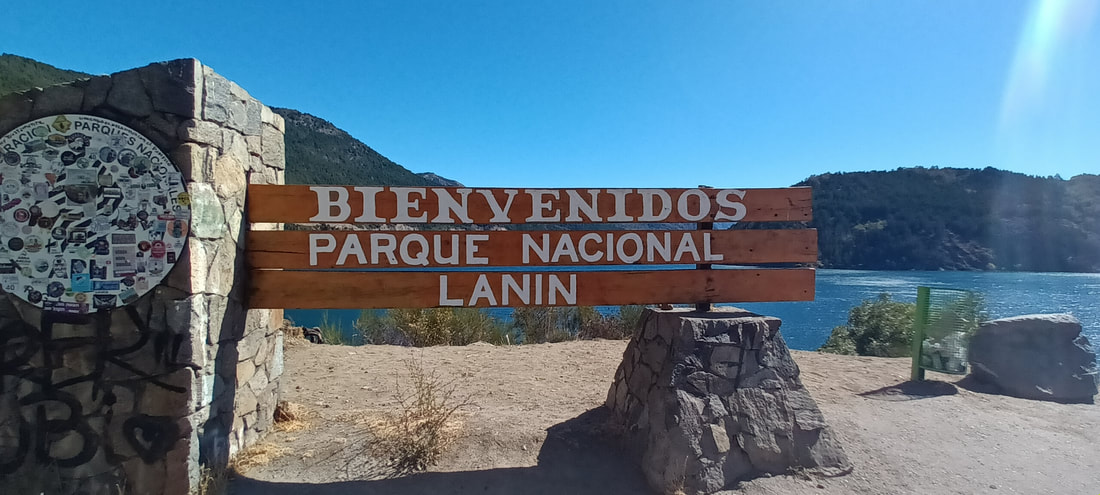
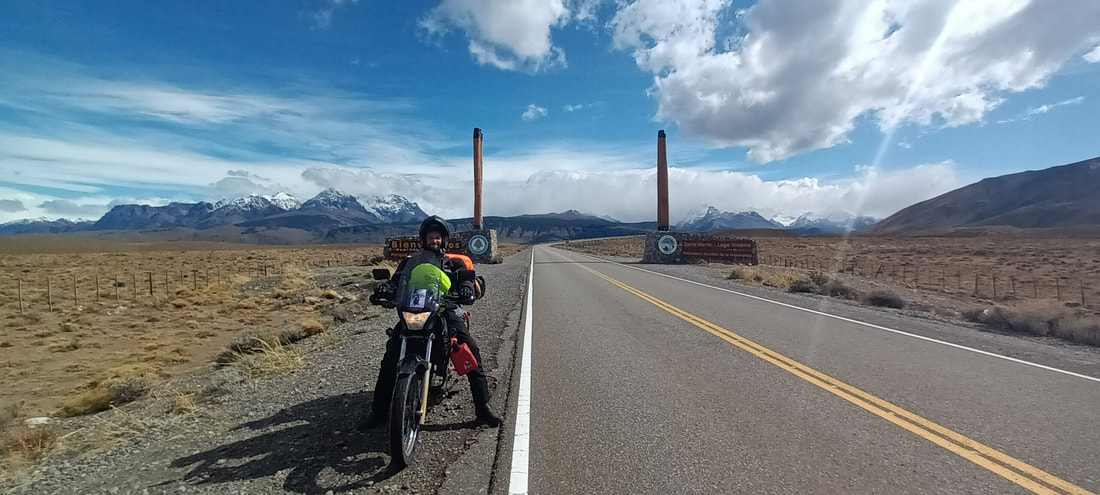
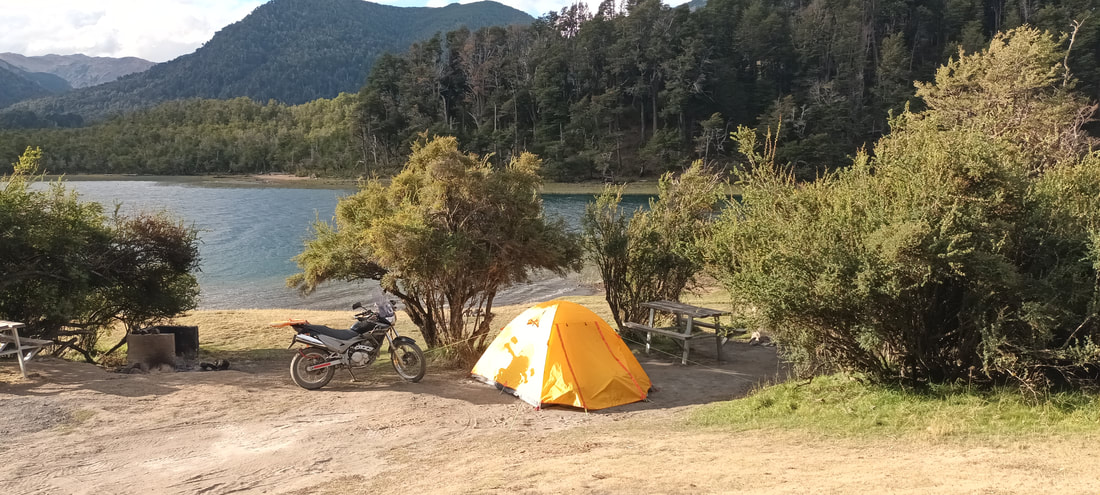
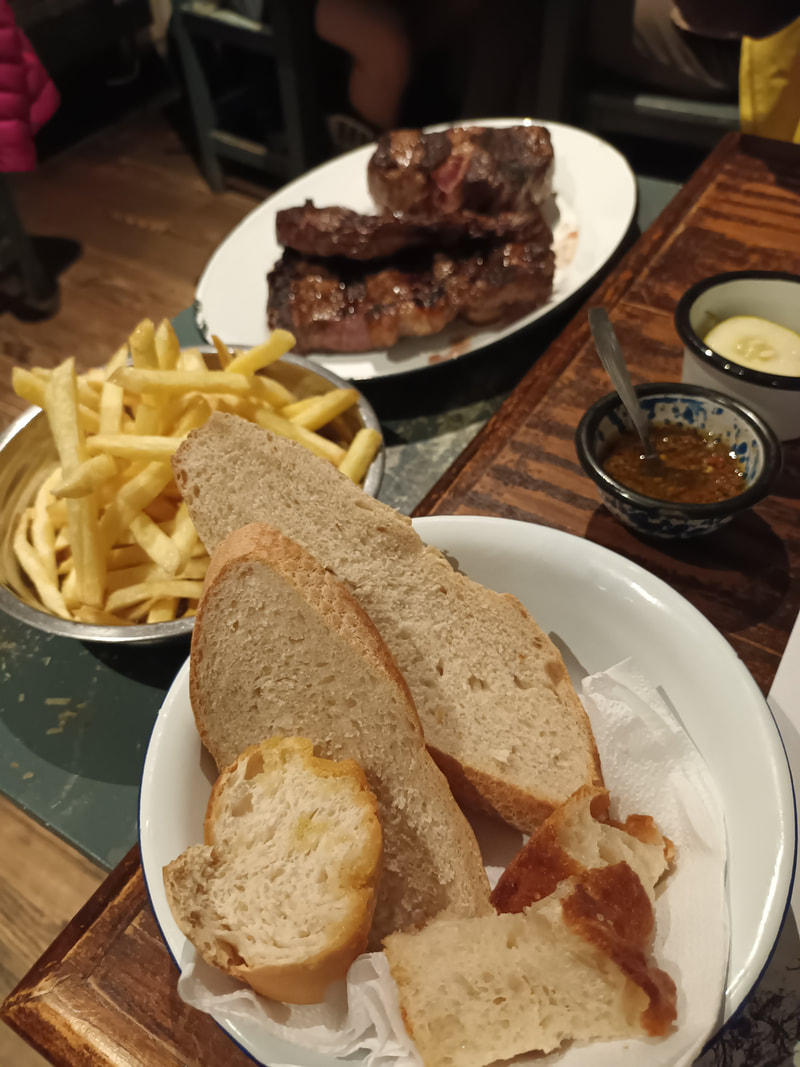
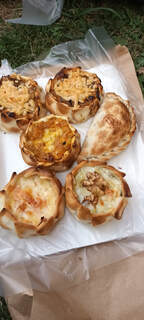
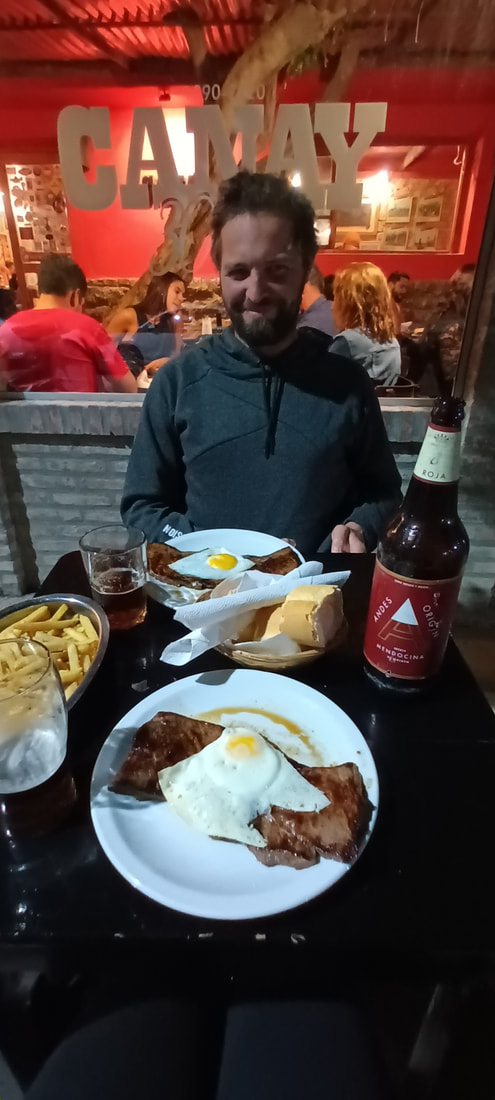
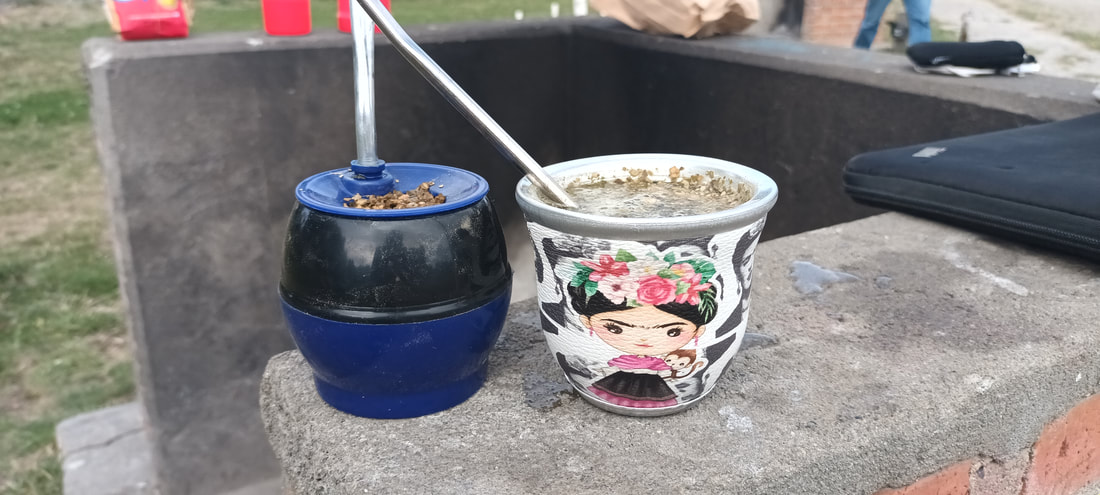
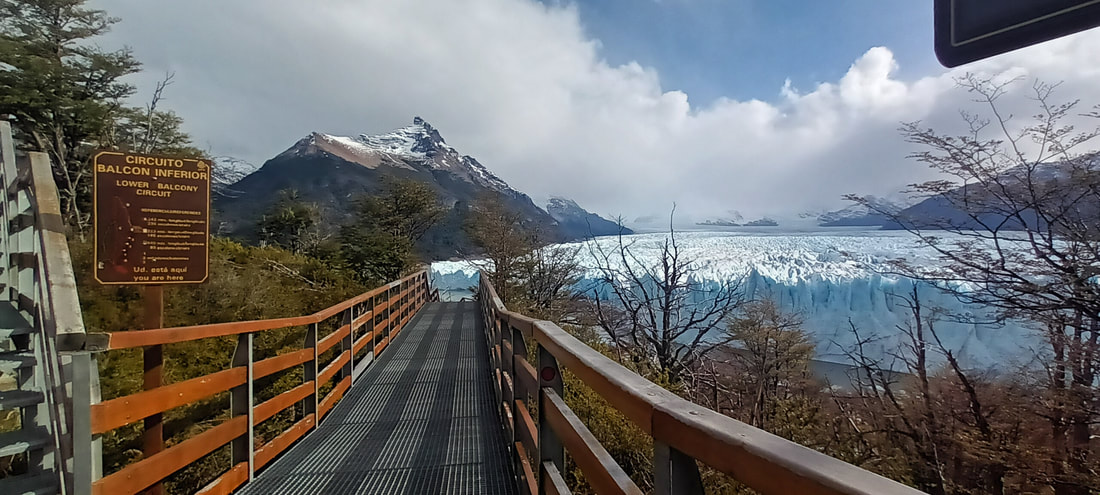
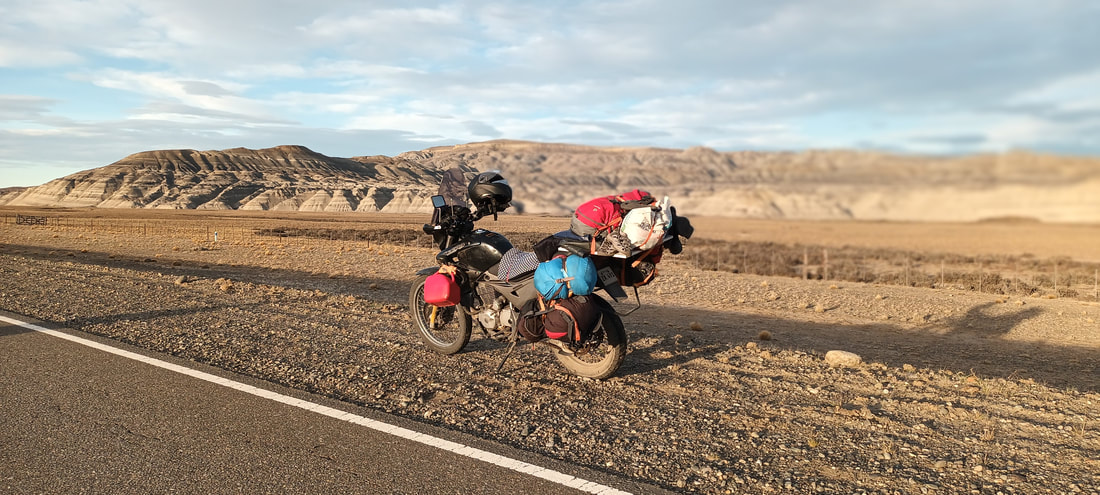
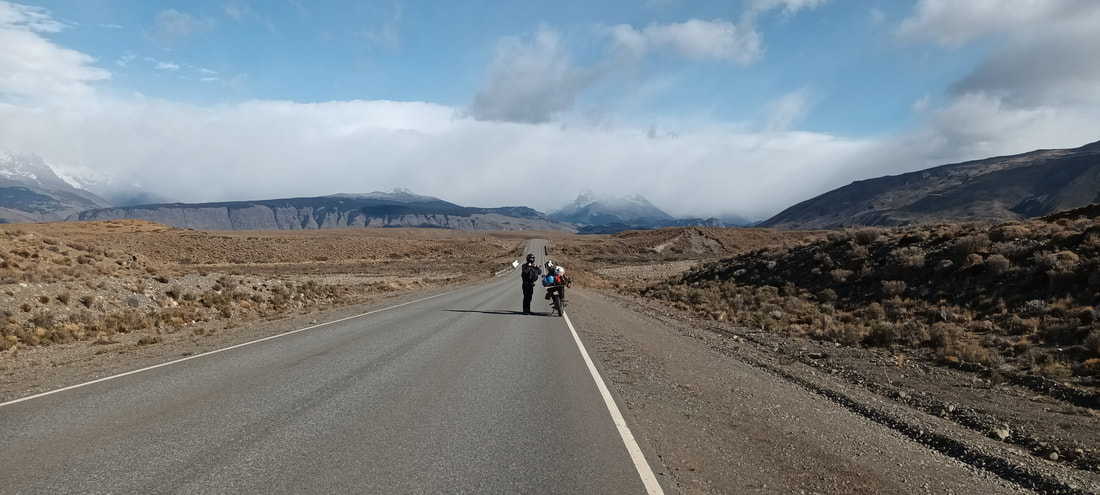
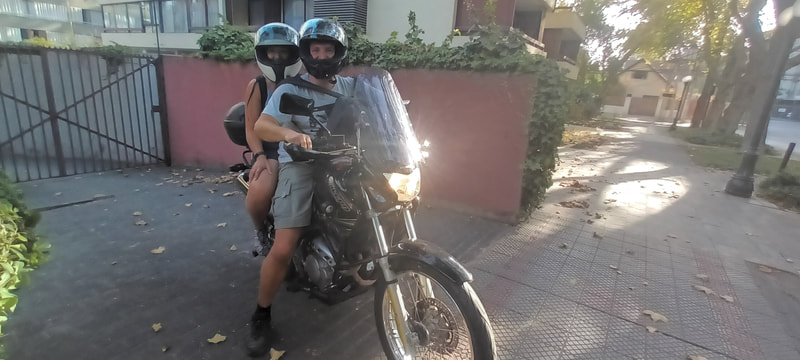
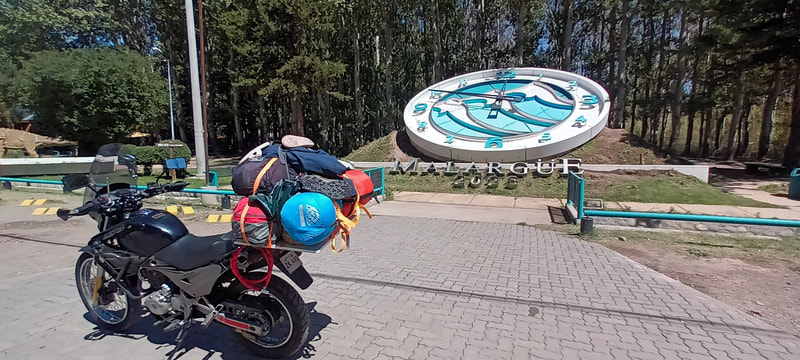
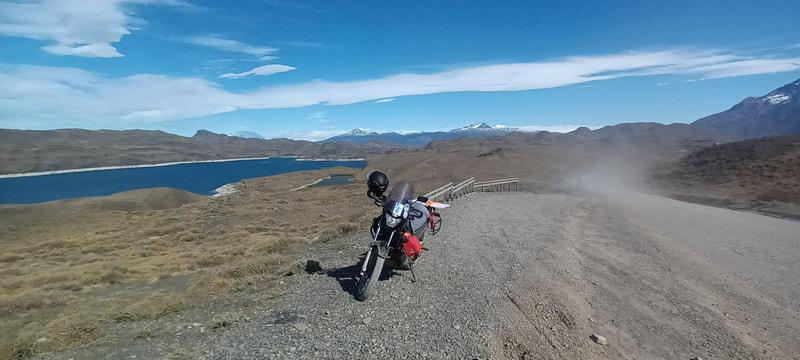
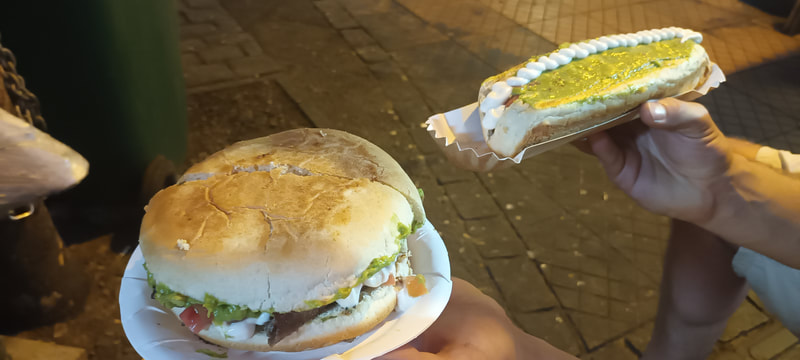
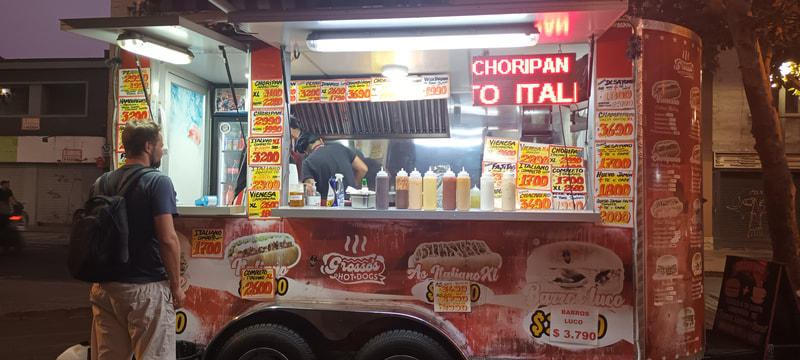
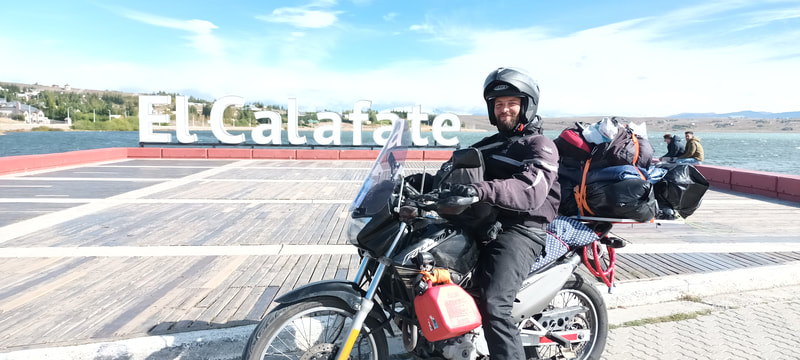
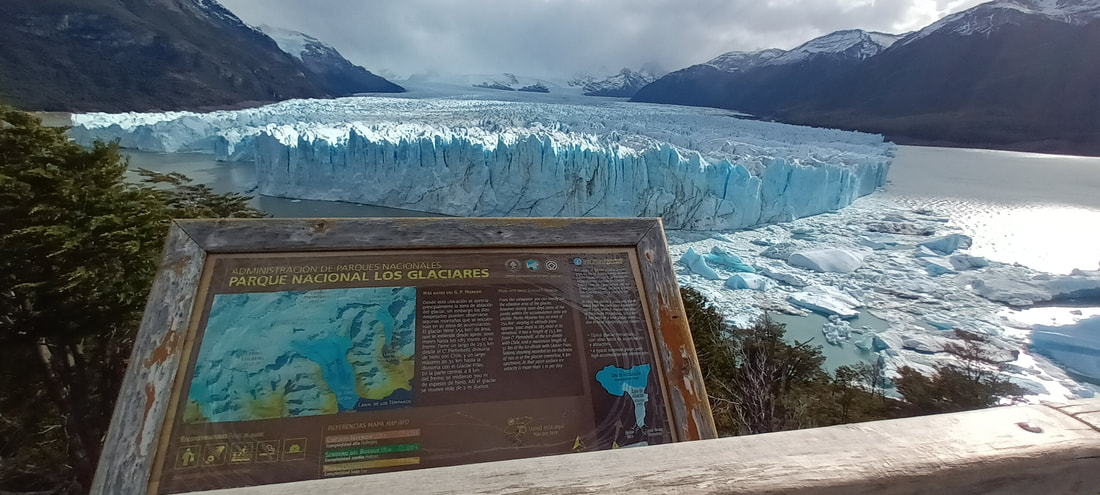
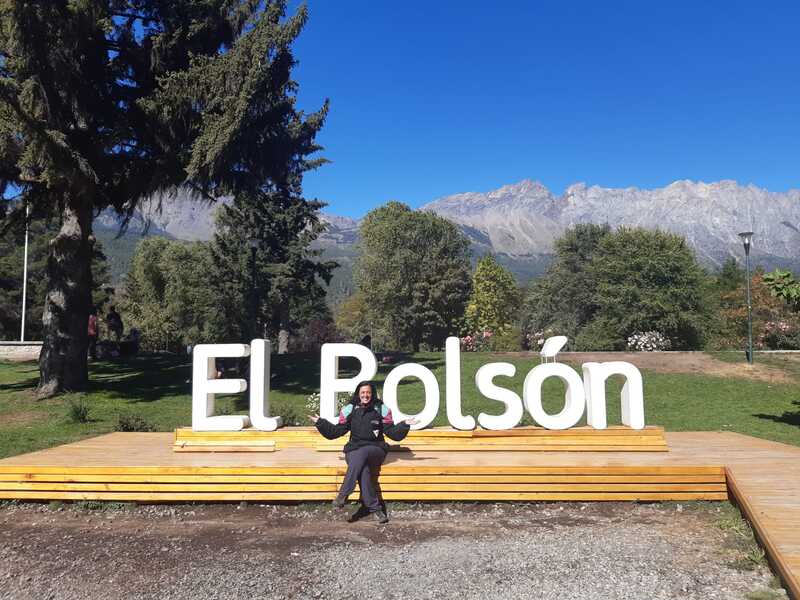
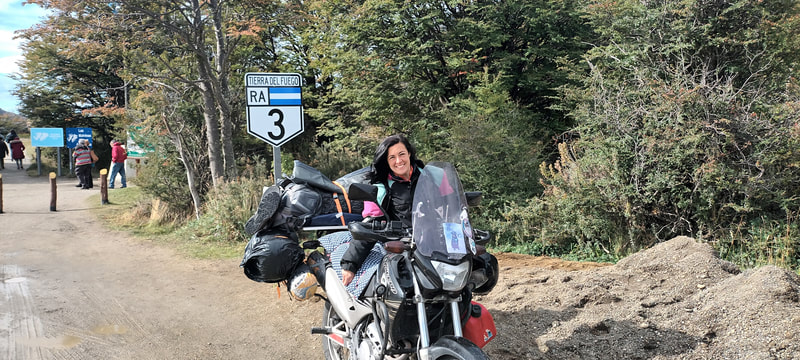
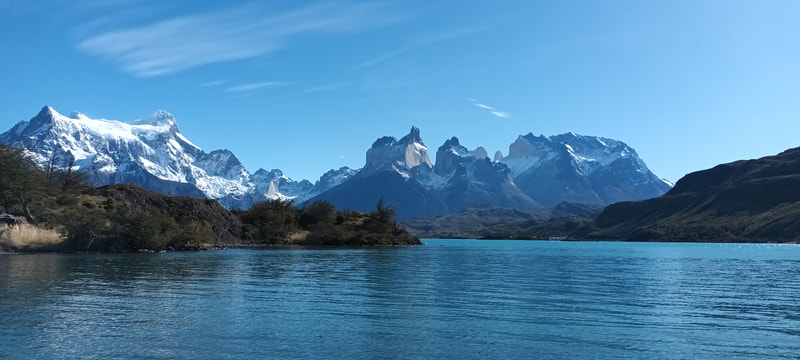
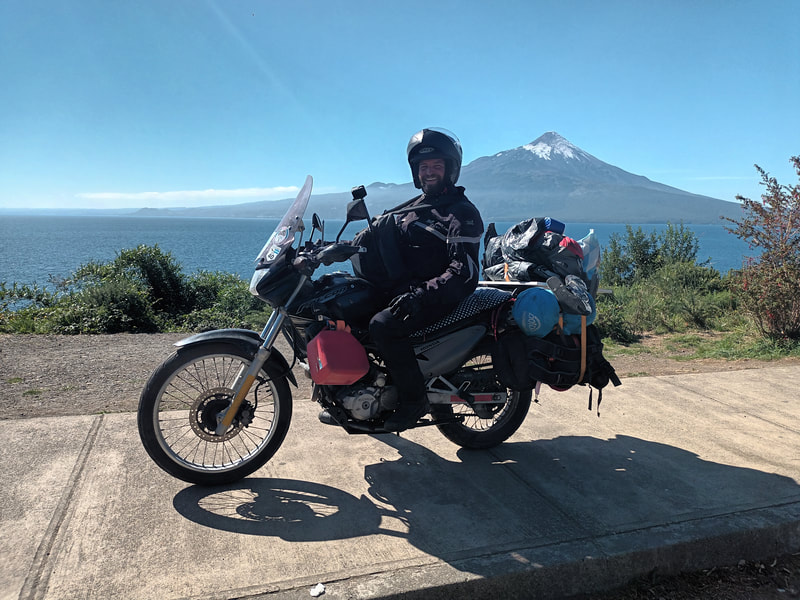
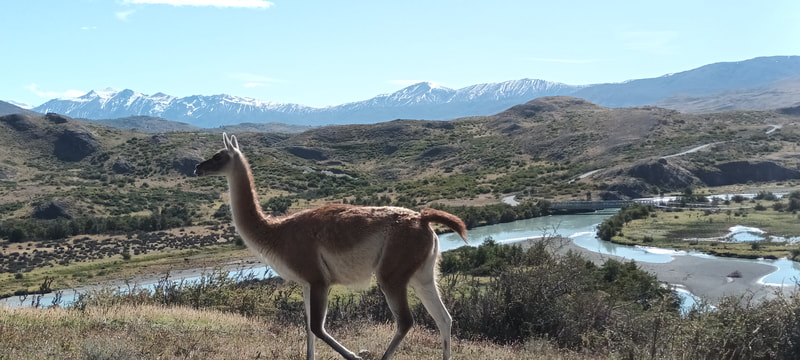
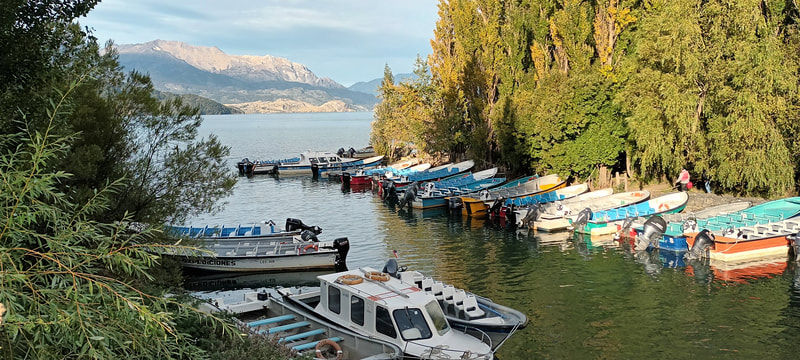
 RSS Feed
RSS Feed
